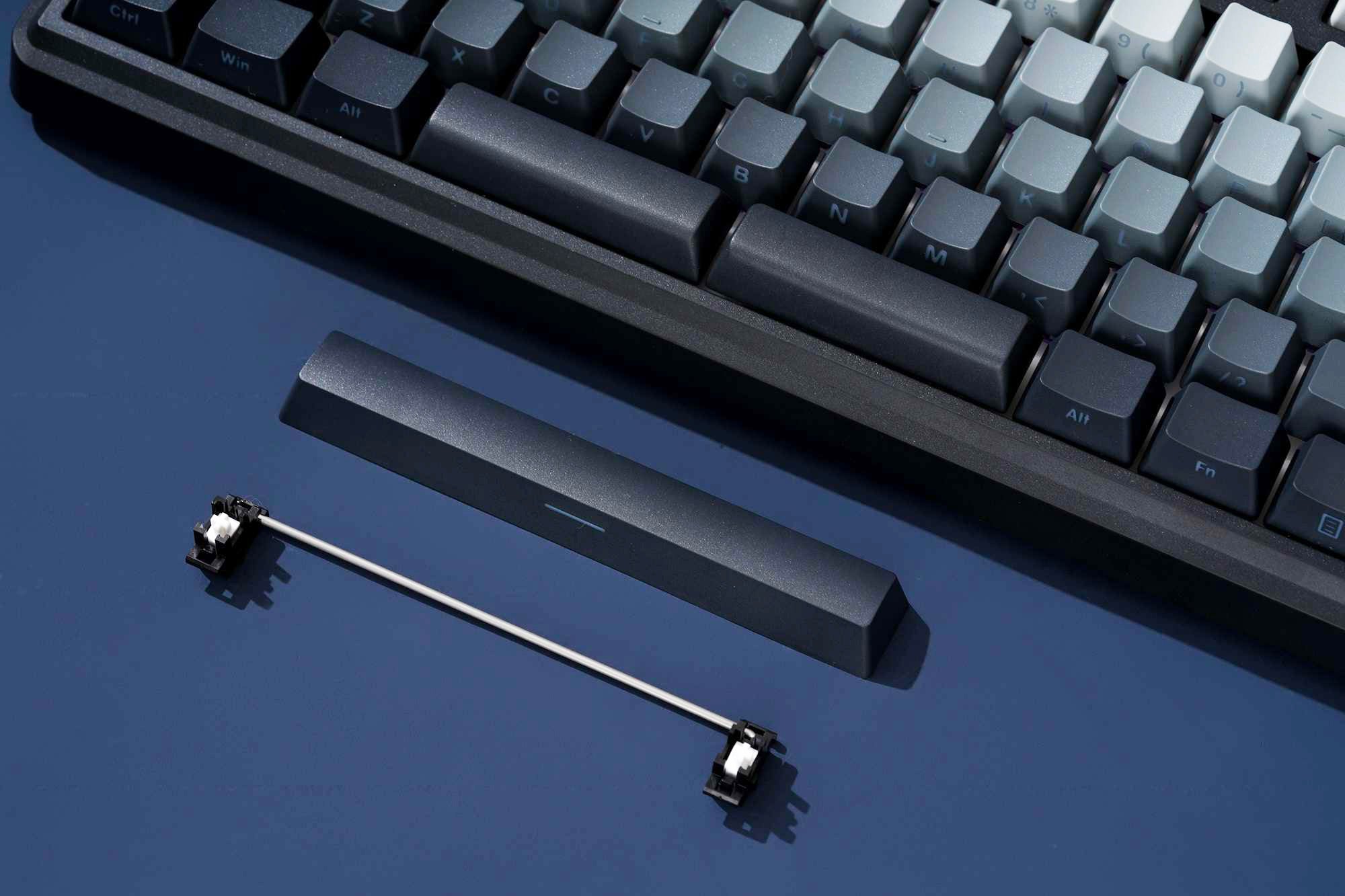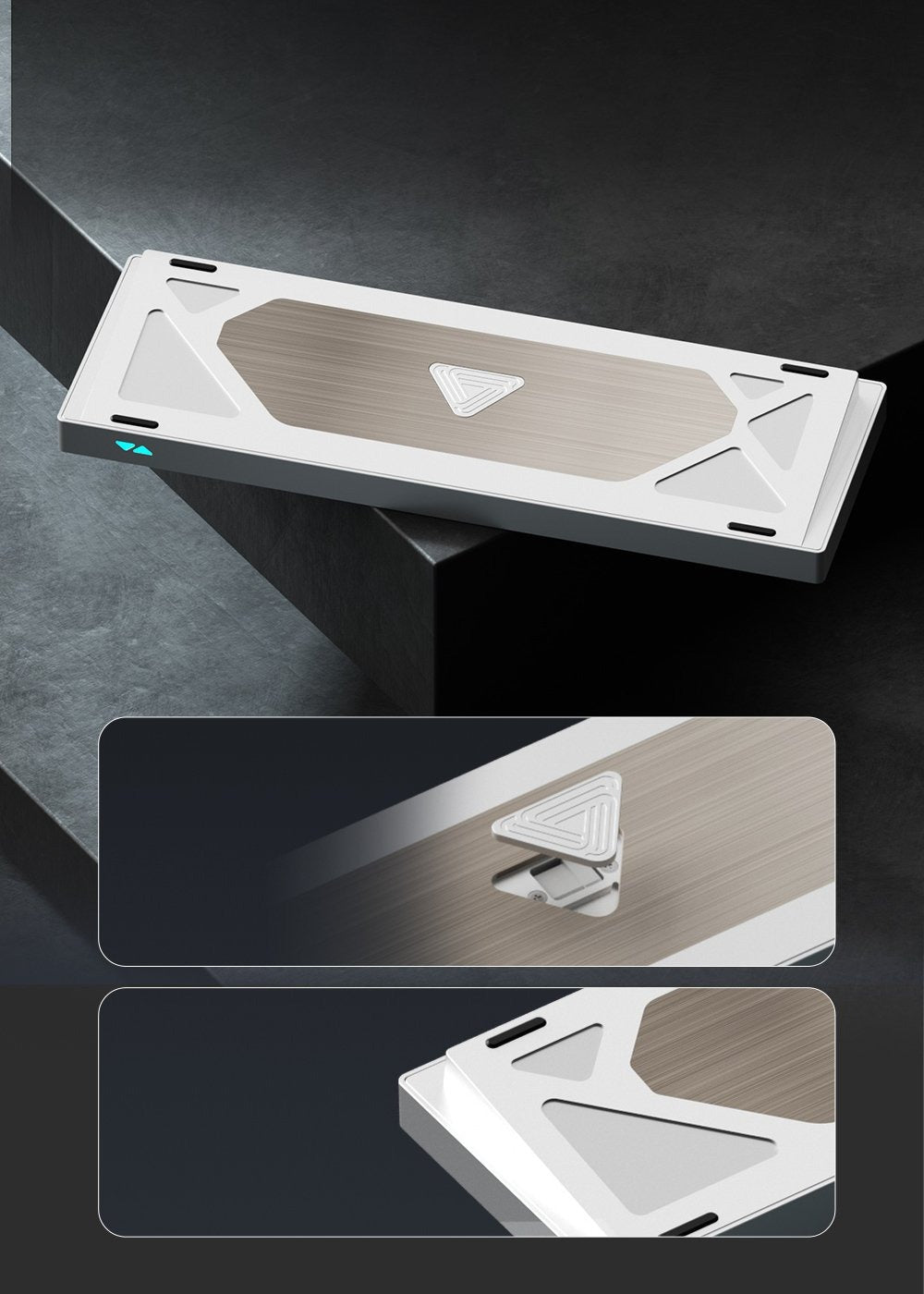When building or customizing a mechanical keyboard, one of the key elements to consider is the stabilizers. Stabilizers are essential for larger keys such as the spacebar, enter key, shift, and backspace, as they prevent wobbling and ensure smooth key presses. Choosing the right stabilizers can significantly impact your typing comfort, sound, and overall keyboard performance.
In this detailed guide, we’ll explain how to select the best stabilizers for your mechanical keyboard. We’ll cover the different types of stabilizers (clip-in, screw-in), how they affect typing feel and noise, and provide tips on installation and customization. Let’s dive in!
What Are Stabilizers and Why Are They Important?
Stabilizers are used in mechanical keyboards to support larger keys. Without stabilizers, the key would not be balanced and might feel inconsistent or wobbly. Stabilizers ensure that these larger keys press down evenly, making the typing experience smoother and more satisfying.
Additionally, stabilizers help reduce key rattle and noise, which can be particularly noticeable on keys like the spacebar. The right stabilizers can improve both the feel and sound of your mechanical keyboard, making them a critical part of your setup.
Types of Stabilizers: Clip-In vs. Screw-In
The two most common types of stabilizers are clip-in and screw-in. Each type has its own advantages and disadvantages, so it's important to understand the differences before selecting the best one for your keyboard.
1. Clip-In Stabilizers
Clip-in stabilizers are the most common type found on pre-built mechanical keyboards. These stabilizers are designed to simply clip into the keyboard plate without the need for screws or extra tools. They are often seen as more convenient and easier to install, making them a great option for beginners.
Pros:
-
Easy to install: Clip-in stabilizers are user-friendly and don't require any special tools. Simply clip them into place on the PCB (Printed Circuit Board).
-
Cost-effective: They are generally cheaper than screw-in stabilizers, making them a good choice if you're on a budget.
-
Widely compatible: Clip-in stabilizers are compatible with many pre-built keyboards and PCBs.
Cons:
-
Less stability: While they provide adequate support, clip-in stabilizers can sometimes lead to wobble or instability, especially in high-performance setups.
-
Less customization: Clip-in stabilizers offer limited customization options in terms of fine-tuning the typing experience compared to screw-in models.
2. Screw-In Stabilizers
Screw-in stabilizers are typically found on higher-end or custom mechanical keyboards. These stabilizers are secured in place using screws that attach to the PCB, offering a more stable and secure installation.
Pros:
-
Increased stability: Screw-in stabilizers are more stable and secure compared to clip-in models. This translates to a more solid and consistent key press with less wobble.
-
Better typing experience: Because they are firmly attached, screw-in stabilizers can reduce rattle and improve the overall feel of the keyboard.
-
More customization: With screw-in stabilizers, you can adjust the tightness and position for further fine-tuning, allowing you to create a more customized typing experience.
Cons:
-
Complex installation: Installing screw-in stabilizers requires extra tools, such as a screwdriver, and is a more involved process. It may not be the best option for beginners.
-
Higher cost: Screw-in stabilizers tend to be more expensive than clip-in versions due to their added stability and customization options.
-
Less compatibility: Not all PCBs are designed to accommodate screw-in stabilizers, so you’ll need to make sure your PCB supports them before purchasing.
Impact on Typing Comfort and Sound
The type of stabilizer you choose can have a significant impact on your typing comfort and sound profile. Here’s how different stabilizers can affect your experience:
Typing Comfort
-
Stability and Evenness: Screw-in stabilizers generally provide more stability, reducing wobble or uneven key presses. This makes for a smoother and more comfortable typing experience, especially for larger keys.
-
Key Feedback: Because screw-in stabilizers are more securely mounted, they tend to provide a more consistent feel across all keys. Clip-in stabilizers, on the other hand, can sometimes feel inconsistent, especially if not properly installed.
-
Key Travel: Some users report that screw-in stabilizers can slightly reduce the key travel, creating a more controlled and precise press. This can be beneficial if you prefer a solid, deliberate feel when typing.
Sound Profile
-
Noise Level: Screw-in stabilizers generally produce a quieter sound compared to clip-in stabilizers. The added stability reduces the rattle that often accompanies larger keys like the spacebar.
-
Smoothness: For users looking for a quieter and more refined typing experience, screw-in stabilizers are often considered the best option because of their smooth action and reduced noise.
-
Lubing: Both clip-in and screw-in stabilizers can benefit from lubrication. Applying lubricant to the stems and rails of the stabilizers can further reduce friction and key rattle, improving both the sound and feel. Lubing stabilizers can make a noticeable difference in the overall sound profile of your keyboard, making it quieter and smoother.
How to Choose the Best Stabilizers for Your Keyboard
Selecting the right stabilizers for your mechanical keyboard involves considering several factors, including your typing preferences, sound preferences, and the level of customization you're willing to undertake. Here’s a step-by-step guide to help you make the best choice:
1. Consider Your Keyboard Build Type
-
If you're building a custom mechanical keyboard, you have more freedom to choose between clip-in and screw-in stabilizers. If you're looking for a high-quality, stable build, screw-in stabilizers are a great choice.
-
If you're using a pre-built keyboard, check the compatibility with either clip-in or screw-in stabilizers. Many pre-built keyboards will use clip-in stabilizers for ease of assembly.
2. Determine Your Preference for Stability vs. Convenience
-
If you prefer a stable, high-performance typing experience and are willing to put in the extra effort for installation, screw-in stabilizers will provide better results.
-
If you’re looking for convenience and ease of installation, clip-in stabilizers are your go-to option. They may not offer the same level of stability as screw-in stabilizers, but they’re perfectly adequate for casual users.
3. Think About the Sound Profile You Want
-
If you're aiming for a quieter, more refined typing experience, screw-in stabilizers are your best bet. They tend to produce less noise and provide a smoother action.
-
If sound isn’t a huge concern for you, or you enjoy the traditional “clicky” sound, clip-in stabilizers might work just fine.
4. Budget and Customization
-
For budget-conscious users, clip-in stabilizers offer a more affordable option with solid performance for most users.
-
For enthusiasts and those looking to customize every detail, screw-in stabilizers offer more customization options and an overall higher-quality typing experience.
Conclusion
Choosing the best stabilizers for your mechanical keyboard can significantly enhance your typing comfort, stability, and sound profile. Whether you opt for clip-in or screw-in stabilizers, both have their advantages and will impact your keyboard's performance in different ways.
For a more stable, smooth, and quieter experience, screw-in stabilizers are a great option, especially for custom builds. However, if you're new to keyboard customization or want an easy setup, clip-in stabilizers provide a great balance of convenience and performance.
No matter your preference, selecting the right stabilizers is an important step in optimizing your mechanical keyboard for a better typing experience.






